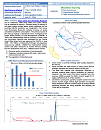The California Water Boards' Annual Performance Report - Fiscal Year 2010-11
PLAN AND ASSESS: TOTAL MAXIMUM DAILY LOAD |
|
| GROUP: |
TOTAL MAXIMUM DAILY LOADS |
|
| MEASURE: |
TMDL IMPLEMENTATION AND OUTCOMES |
|
| MESSAGE: |
169 TMDL have been adopted to address 970 impaired water body listings, but more than 1,100 listings still need to be addressed statewide.
Implementation of TMDLs is now underway. |
|
| KEY STATISTICS FOR FY 2010-11 |
| Number of TMDLs Adopted to date |
169 |
| Number of Listings Addressed by TMDLs |
970 |
| Total Number of Listings Remaining |
1,141 |
|
TMDL OUTCOME REPORTS
| Region 1 |
Region 2 |
Region 3 |

|

|

|
| Region 4 |
Region 5 |
Region 6 |

|

|
|
| Region 7 |
Region 8 |
Region 9 |

|

|

|
WHAT THE MEASURE IS SHOWING
Under Section 303(d) of the Clean Water Act, California required to develop a list of waters that do not meet water quality standards. This list is often referred to as the 303(d) list. The Clean Water Act further requires development of action plans, called as Total Maximum Daily Loads (TMDL), to improve water quality. As of July 1, 2011, the State and Regional Boards adopted more than 160 TMDLs addressing almost 1,000 impaired waterbody listings. In California, TMDLs are incorporated into Basin Plans and include a program of implementation to ensure actions are put in place to reduce pollutant sources and ultimately resolve water quality problems. In effect, TMDLs are performance based water quality management plans. TMDL implementation schedules; however, can range from years to decades depending on the type of pollution, the complexity of the TMDL, and the physical setting of the waterbody being addressed. The progress reports presented above explain the implementation status and/or the water quality outcomes resulting from implementation of specific TMDLs. Each TMDL has a different program of implementation, a different schedule, and usually different challenges, therefore, the water quality outcomes vary.
WHY THIS MEASURE IS IMPORTANT
Adoption of TMDLs can be a resource intensive and a time consuming process. Once adopted, TMDLs must be implemented to provide water quality benefits. As indicated above TMDLs are usually incorporated into a Regional Water Board Basin Plans, which in turn require development of a program of implementation for achieving the TMDL, including a description of the nature of actions that are necessary to achieve water quality objectives, time schedules for the actions to be taken, and a description of surveillance to be undertaken to determine compliance with objectives. This measure tracks TMDL implementation progress and shows how TDML implementation affects water quality.
TECHNICAL CONSIDERATIONS
- Data Definitions: TMDL project: A TMDL project is a planned strategy to reduce pollution in an impaired water body so that its water quality standards are met. A TMDL project addresses one or more pollutants for a given waterbody or segment of waterbody (known as TMDL listings). TMDL listing: A TMDL listing refers to a pairing of a waterbody and a pollutant that is responsible for the impairment (i.e., each water body-pollutant combination is called a listing). A given waterbody is impaired due to the presence of one or more pollutants (each called a listing) and a TMDL project may address more than one listing. . The extent of each listing varies among Regional Boards. The current TMDL projects and listings are documented in the Water Boards' 2006 Clean Water Act Section 303(d) list. Listing Underway: Listings remaining to be addressed by TMDL projects underway.
- References: Information on the Water Boards' TMDL activities
GLOSSARY
- Impaired Water (Listing)
- An impaired waterbody is one that does not meet the water quality objectives established to protect the beneficial uses of the water due to the presence of one or more pollutants. Such waters are identified on the Water Boards' Clean Water Act Section 303(d) list.
- Pollutant
- A pollutant is a waste or substance that, at certain levels, can cause waterbody impairment. The monitoring programs of the Water Boards and others provide information on the levels of pollutants in the State's waters.


















